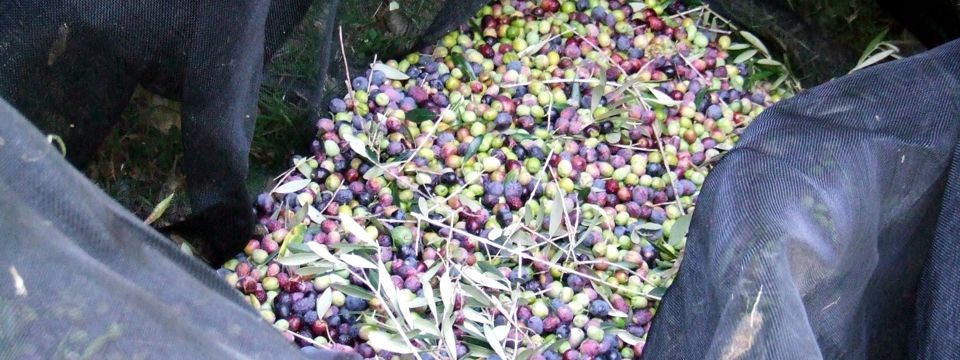
Оливковый выходнойOlives weekend
Было очень странно узнать, что среди детских воспоминаний моих испанский знакомых отсутствует сбор колорадского жука на картофельных грядках. То ли жук в местном климате не водится, то ли химикаты здесь хорошие, то ли картошку тут на частных огородах не популярно растить — не знаю. Зато, у местных есть другая, традиционно средиземноморская, агрозабава: сбор оливок.
Одним прекрасным ноябрьским днём, родители друзей решили, что оливковые деревья на их огороде дошли до нужной кондиции и попросили нас помочь со сбором, обещая накрыть вкусный сытный обед на исходе дня. Я с радостью согласился принять участие в этом экзотическом для меня событии :)
Дано: на огороде 70 деревьев, густо усыпанных оливками. Собирать их руками поштучно — совершенно безнадёжная затея. Спрашивается: как бы вы поступили?

Технология ручного сбора оливок в картинках: берётся большая сетка.

Сетка расстилается на земле вокруг обрабатываемого деревца.

Участники вооружаются вот такими вот чесалками…

и начинают расчёсывать ветки, счёсывая с них ягоды и немного листвы (но листьев отрывается немного: они маленькие и расчёска их не цепляет, в отличии от ягод).

Ещё надо смотреть под ноги, чтобы не топтать накапливающиеся на сетке оливки.
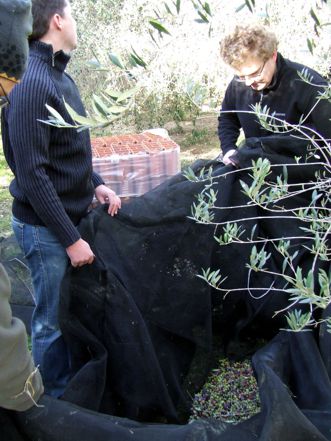
Когда дерево полностью обобрано, сетку аккуратно поднимают, кучкуя ягоды в центре.
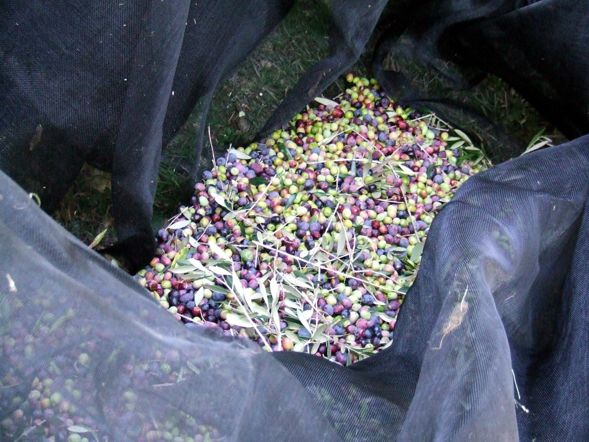
Как видите, спелые оливки с дерева имеют самые разные оттенки (а ещё они дико противные на вкус). Свои обычный цвет и вкус (какими вы их знаете) они приобретают после дополнительной обработки: их там в чём-то вымачивают некоторое время.
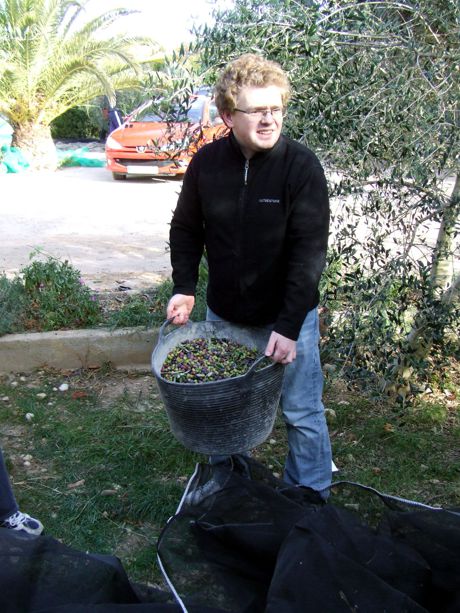
С сетки оливки перегружаются в тазик.

Из тазика оливки ссыпаются в большие холщовые мешки, в которых они будут ждать своей участи: либо поедут на отжим масла, либо на процедуры для приготовления в пищу.
За день работы с 10:00 до 17:00 наша команда из 10 человек обобрала порядка 15-ти деревьев, собрав с них около 250 килограмм ягод. Оставшиеся оливки хозяева огорода собирали уже без нашей помощи, но там у них дело шло быстрее: оставшиеся 55 деревьев были не такими большими как те, с которыми развлекались мы.
Как вы понимаете, для промышленного производства оливок хочется чего то более продуктивного, чем ручной труд. На помощь фермерам приходит специальный комбайн. Он едет по ряду деревьев так, что деревья проходят внутри него (соответственно, на поле их регулярно стригут, чтобы они были не больше заданного размера), где их чешут большие щётки:

Оливковый комбайн: вид спереди.
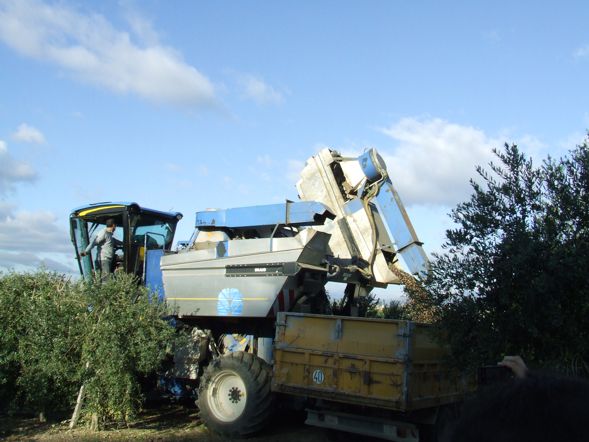
Потом собранный продукт перегружают в грузовики
и отправляют на обработку.

Оливковый выходнойOlives weekend
It was very surprising for me to discover that my Spanish friends don’t have any child memories about collecting of Colorado bugs from potato fields. I don’t know is it because the bugs don’t live in the local climate or because the local chemistry is efficient against them or because potato is not very popular here to be planted in private gardens. Anyway, instead of Colorado bugs collection, the local people have another agriculture entertainment, traditional for the Mediterranean, the harvesting of olives.
One nice November day, parents of my friend decided that the olives trees in their garden have achieved the proper state and asked us to help with picking of the crop, promising us a big delicious dinner in the end of working day. I was happy to join this activity such exotic for me.
Conditions: garden with 70 trees, rich-covered with olives. To harvest them one-by-one with empty hands will take forever.
Question: what can you do about it?

Technology of hand-harvesting of olives in pictures: you get a big net.

You put this net on the ground below the tree to be harvested.

Harvesters take such kind of devices…

and start to card the branches. The olives goes to the ground, the leaves mostly stays on tree, because they are too small to be teared away by such combs.

Of course, you should to watch where you step in order not to smash the olives already lying on the net.

When the tree is finished you take the net and concentrate all the olives in the center of it.

As you can see, all the olives just from a tree have different colors (and awful taste).
Their usual color and taste they got after some post-treatment
(they should be treated by some special solution for a while).

From the net the olives move to a basin,…

and further to a big sack to wait there their destiny: to be squashed into oil or to be treated and prepared for eating.
In on day of work from 10:00 to 17:00 our team of 10 people have harvested around 15 trees and got from them about 250 kilos of olives. The rest of the trees the owners collected later by they own, but it was faster, because the rest of the trees were not such big as those we had harvested.
As you understand, for production of olives on industrial scale, you need some machine to harvest them efficiently. And such machine actually does exist. It looks like on the picture below. The machine is riding along a line of trees (which are cut regularly in order not to be too big and fit inside the machine’s gate). A big combs inside the machine cards the olives out of the trees and that’s it.

Olives harvester: the front view.

Then the harvested olives goes to a truck and to a further treatment.
